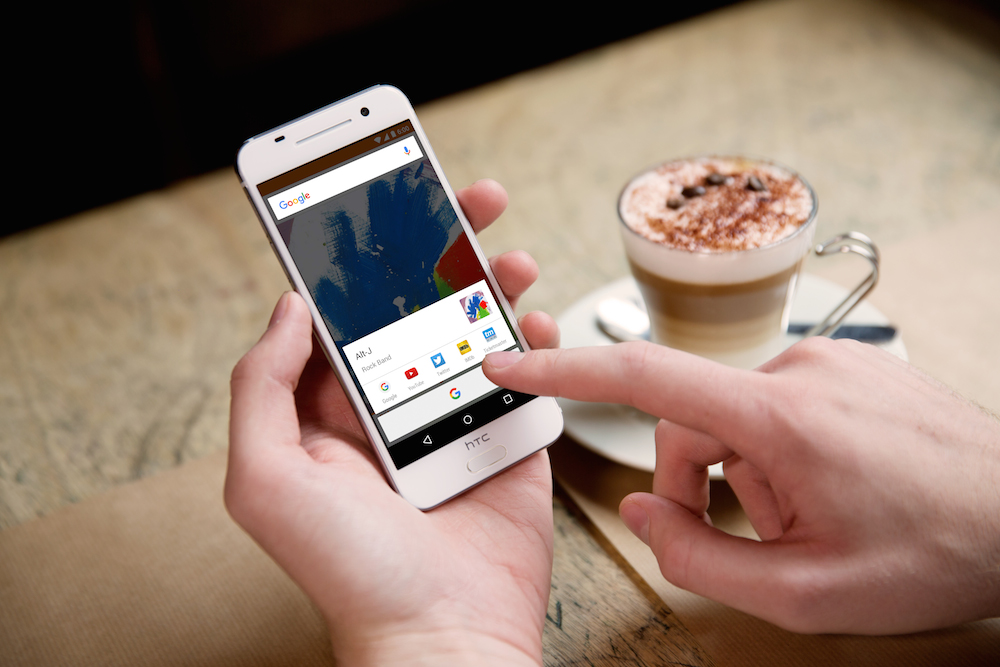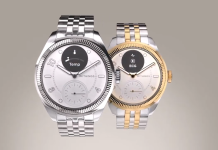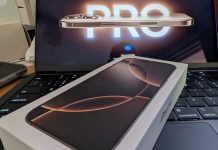
After a series of leaks and a lot of speculation, HTC has unveiled the newest phone in their HTC One series this morning in an online event. Until now, the HTC One brand has focused mainly on its flagship – the M series – and its mid-range contender – the E series. The new A line marks a new entry, with stunning aluminium unibody designs.
HTC describes the A9 as ‘Design worth imitating’, which is a curious choice of wording given the high degree of similarity between the A9’s design and the Apple iPhone. Similar, but with enough HTC-ness to keep it unique. Just as with the HTC One M9, each A9 is ‘painstakingly brushed with hairline detail and bead-blasted before the sides are polished, giving additional depth and richness that is unique to the smartphone market’.
Design and style are all well and good, but if what’s under the hood is no good, its all for nothing. HTC has paid heed to the lessons of past camera forays; there’s no more 4MP UltraPixel camera on the rear here, nor is there the 21MP camera lacking OIS from the One M9; rather, the A9 features a 13MP camera with Optical Image Stabilisation to deliver blur-free photos, with less noisy and jitter especially in low-light settings. The front-facing camera retains HTC’s UltraPixel heritage, making for great low-light selfies too. There will be RAW support for aspiring photogs, and a 12x Hyperlapse mode for videographers.
While the front-facing BoomSound speakers have been removed, HTC say that the A9 will still deliver ‘high-resolution audio’ mostly when paired with the headset which includes Dolby Audio Surround technology to deliver an immersive sound. The One A9 also includes a high-quality, built-in DAC (digital to analog converter) that delivers audio at 24-bit, 192KHz quality. Until now, this has been fairly uncommon in the mobile audio sphere.
HTC sums up the phone as ‘the smartphone that gets all the important elements right’. Company chairperson and CEO, Cher Wang said of the One A9:
“HTC is a smartphone pioneer, having delivered the first Android smartphone, the first Windows smartphone, the first 4G smartphone, and the first all-metal smartphone.
Today we’re taking that heritage of innovation to the next level, unveiling a phone that stands apart in a market increasingly dominated by a company which controls every aspect of your phone. The HTC One A9 breaks from this trend by offering an incredible design, fantastic performance, cutting-edge software features and the freedom to take full control of your smartphone experience.”
Perhaps the biggest standout feature on the HTC One A9 is not its hardware; it is also the first phone announced to be running Android Marshmallow out of the box (besides the Nexus 5X and Nexus 6P). The One A9 includes all the Marshmallow highlights, including Google Now On Tap, Doze, and support for fingerprint sensors — yes, the One A9 has one of those built-in to the front of the device as well, all integrated with a refined, minimalist HTC Sense skin.
Even though HTC Sense remains on the device, a lot of it has been de-coupled from the OS itself; Blinkfeed and other HTC Sense features are now separate apps that can be updated without updating the underlying Android version, and this has an added benefit. HTC has committed to delivering ‘every Google Software update within 15 days of Nexus devices’.
Did you hear that? The Unlocked A9 will receive every Google SW update within 15 days of Nexus devices! #BeBrilliant
— HTC USA (@HTCUSA) October 20, 2015
So, what’s inside the HTC One A9? Aimed squarely at the upper mid-range, the One A9 promises to be no slouch:
- 5″ Full HD 1080p, Corning Gorilla Glass 4
- Qualcomm Snapdragon 617, octa-core, 64-bit, 4×1.5GHz + 4×1.2GHz
- RAM: 2GB / 3GB (* market dependent)
- Storage: 16GB (on 2GB RAM model) / 32GB (3GB RAM), expandable to 2TB with MicroSD
- Cameras
-
- Rear: 13MP with sapphire lens cover, f/2.0 aperture, auto focus, BSI sensor, OIS, 1080p video recording
- Front: HTC Ultrapixel, f/2.0 aperture, fixed focus, 1080p video recording
- Cellular:
- 2G GSM/GPRS/EDGE: 850/900/1800/1900 MHz
- 3G UMTS: 850/900/1900/2100 MHz
- 4G LTE:
- FDD Bands 1, 3, 5, 7, 8, 20, 28
- TDD Bands 38, 40, 41
- Sensors: Fingerprint, Ambient light, Proximity, Motion G, Compass, Gyro, Magnetic, Sensor Hub processor
- GPS + GLONASS
- Bluetooth 4.1, Wifi 802.11 a/b/g/n/ac (2.4+5GHz), 3.5mm stereo audio jack, microUSB 2.0 port
- Dolby Audio and Hi-Res Audio (manufactured under license from Dolby Laboratories)
- 2,150mAh with Quick Charge 2.0 support (forward compatible with Quick Charge 3.0)
- 145.75 x 70.8 x 7.26 mm @ 143 grams
The HTC One A9 will be available in a range of colours, including Opal Silver, Acid Gold, Cast Iron, Deep Garnet and Carbon Grey.
Launch is set for early November, and though we don’t have confirmation at this early stage of local pricing and availability, the US outright price starts at $399 (though this appears to be a promotional price) so something in the realm of $599 to $699 seems about right for the specs. The appearance of the HTC One A9 on the Australian HTC website certainly suggests quite strongly we’ll see the A9 on our shores in the not too distant future.
We’ll be on the phone to HTC today to find out more about their plans for Australia, and we’ll keep you updated as that information comes to hand!







